Midges or midgies are the name given to mosquitoes in Scotland. What you need to know about Scottish midges, when they appear and how to defend yourself.
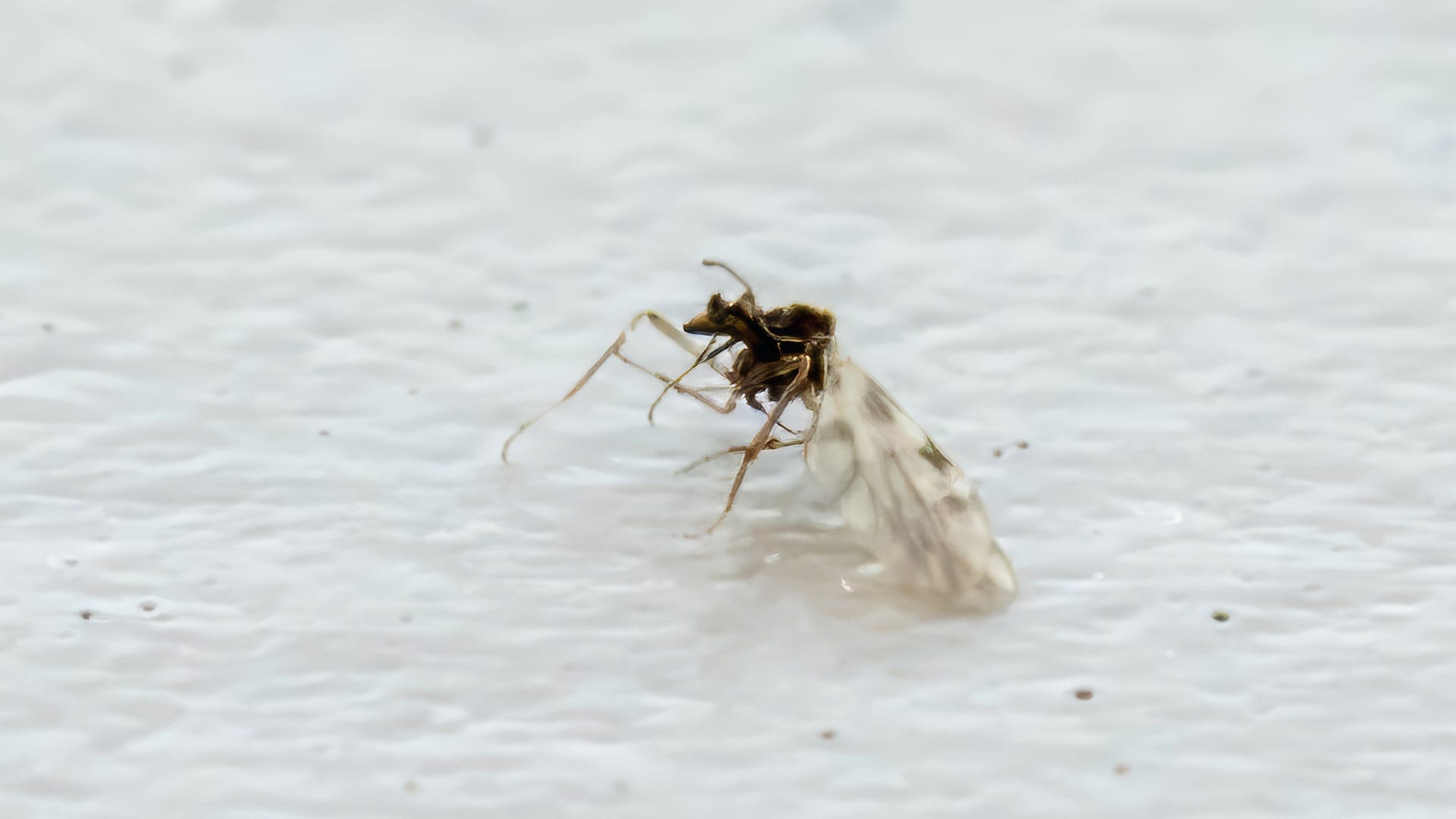
Contents:
» about midges
» Appearance
» Fending off midges
In a nutshell:
- Scotland’s midges are actually biting flies
- they only occur in certain areas in certain weather conditions
- there are various ways to defend yourself against midges
Everything has its price. Even the beauty of the Highlands. The wild green comes from lush soil due to lots of rain. Unfortunately, this is exactly what some insects love. And so various bloodsuckers make life difficult for outdoor tourists in Scotland.
There is a whole range of pests: Horseflies, black flies – and of course the famous Highland midges. It is the most common.
What exactly are midges?
The Highland midge(Culicoides impunctatus) is a small mosquito, similar to the local bearded mosquito or gnat. The Highland midge is just two millimetres long. It has only one pair of wings with small dots on them.
However, only the females are dangerous to humans. They need protein, which they find in blood, to lay their eggs. The midges are not picky. They will feed on pretty much any mammal.
Incidentally, Scottish midges do not actually bite. They bite! They have special mandibles that they use to cut into the skin. They then suck the blood from the capillaries.
To speed up the blood flow, the midge pumps its histamine-laced saliva into the wound. Histamine has the property of dilating small blood vessels. At the same time, it is responsible for the reaction of the skin – the itchy spot that gives us an unpleasant time.
The Highland midge detects its victim by smelling its breath, more precisely carbon dioxide. The midge can do this within a radius of a hundred metres! So no escape …
Why are there so many midges in the Highlands?
In the west of Scotland, rainfall is on average twice as high as in the east. Together with the peat of the land, this provides midges with an ideal area for breeding. This is because midges like to lay their eggs on the edges of bogs and ponds. There the larvae can hatch, develop and overwinter.
Are Scottish midges dangerous?
Anyone who reacts violently to the bites of midges will not have fun. However, Highland midges still do not transmit any dangerous diseases – unlike many biting insects in Africa or Asia. In this respect, midges are more of a nuisance than a real danger for most people.
When do midges become active?
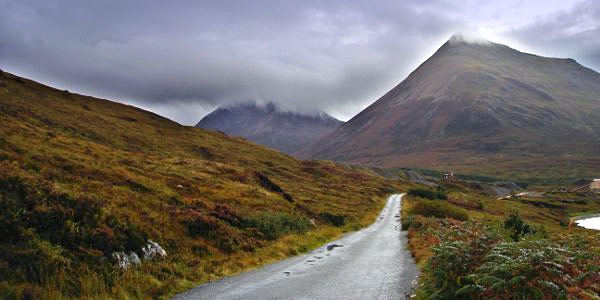
The good news is that midges need certain conditions to be able to fly:
- High temperature
Below 10 degrees Celsius is not good for midges - Low wind
The wind speed must be below 10 KM/h. In other words, even a light wind disturbs the mosquito’s flight. For comparison: A storm starts at 83 KM/h. - Little light
The pests do not like brightness. It has to be dodgy – which is why they prefer to appear at dusk. However, rain clouds can also create these light conditions. And there are plenty of them in Scotland. - High humidity
Midges do not become active in dry air. They only feel comfortable at a relative humidity of around 70 per cent. They love 90 per cent. So when the feeling of sultriness sets in, the midges are in a really good mood. Even light rain doesn’t bother them.
How can I defend myself against midges in the Highlands?
1. Choose the midge-free season
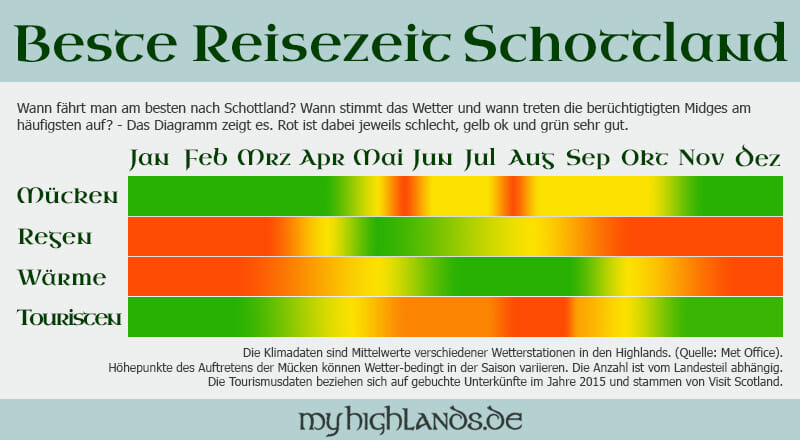
Midges in the Highlands usually start swarming in April. They then finish in October. There are also two peak times when they are particularly common: Late May, early June and late July, early August.
In short: Scotland is not only worth a visit in the height of summer. You can avoid the midges if you travel in spring before May or in late autumn from the end of September. The green of the Highlands may not be quite as lush, but the midge season is already over. And there are also fewer tourists around.
2. Avoid midges with the help of the midge forecast
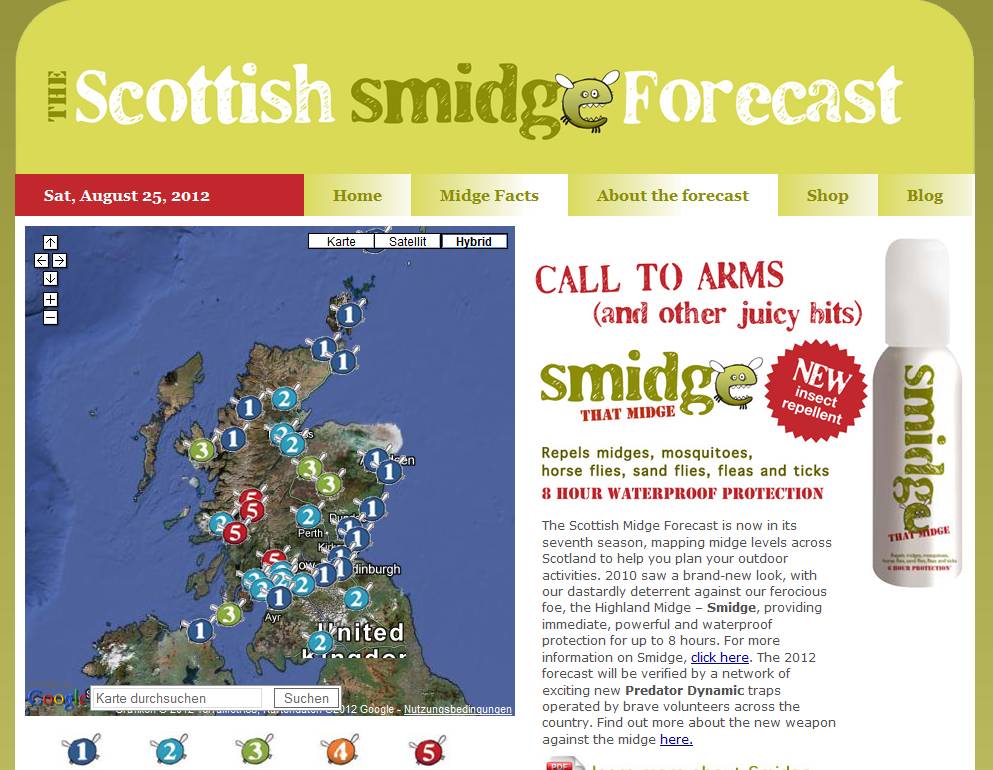
This website shows which places in Scotland are more or less affected by midges on a daily basis:
So if you are reasonably flexible in your travel route, you can avoid the midge areas.
Otherwise, you can at least prepare yourself mentally.
The midge forecast is also available as an iPhone app in Apple’s Appstore for when you are travelling.
3. Mosquito repellent to ward off midges
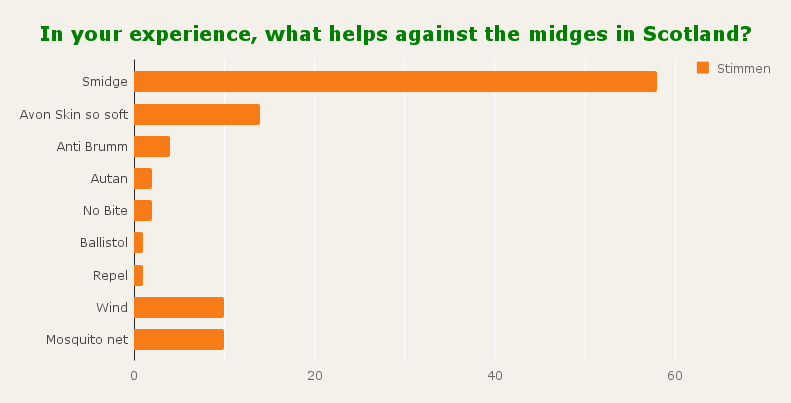
There are plenty of mosquito repellents out there, but not all of them are effective at repelling midges.
The hot tip from a resident of Islay (an island on the west coast that is often infested with midges) is to rub in Avon Skin So Soft Oil. The beasts will land on you, but they probably won’t bite.
Update April 2015: It is said that Avon has changed the formula for the oil and it is no longer quite as effective. However, I can’t find any evidence of this at the moment.
A study from 2006 compared Avon and a 95 per cent DEET solution with a placebo, and Deet came off best. However, I cannot say how friendly the product is to the skin. But you can also buy 100 per cent DEET such as “Repel 100”. However, I have no personal experience with this.
DEET abbreviates the active ingredient N,N-diethyl-m-toluamide. It is even recommended by the World Health Organisation when people need to protect themselves against mosquitoes that transmit malaria, for example. However, DEET can irritate the eyes and mucous membranes. In very rare cases, it has even been linked to epilepsy outbreaks, insomnia and other symptoms. However, in areas where mosquitoes carry serious diseases, the benefits appear to outweigh the risk of side effects.
It is not entirely clear why DEET works so well, but it is thought to block the mosquitoes’ scent receptors – in short, they can no longer smell their victims.
The product Smidge, which also publishes the Midge Forecast, is widely used in the Highlands. It contains no DEET and is said to be both effective and harmless to the wearer’s health. The basic principle of Smidge is similar to that of DEET: the midges can smell the victim worse.
I also started a survey in a Facebook group of experienced Scottish tourists to find out which mosquito repellent is best suited for Scottish midges. You can see the result in the graphic above.
In the end, every traveller has to test for themselves which midge repellent works for them and poses no risk. As Smidge is quite widespread, this is a good place to start.
4. Simple protection: wear clothing that closes well
Besides the fact that midges bite, they are also annoying because they fly in your face. This can be particularly annoying when you are hiking. The right clothing can help against this. A jacket with Velcro fasteners at the sleeve ends and a tight-fitting collar helps prevent the animals from crawling in everywhere. A hat or cap in combination with a scarf (“buff”) protects the face. Very sensitive people can buy a hat with a mosquito veil.
5. Light-coloured clothing is less attractive to mosquitoes
This should also help: Midges are mainly attracted to dark-coloured clothing. To prevent this, you can wear colourful and light-coloured fabrics.
Sources:
Stephan Goldmannstephan@goldmann.deProfil edit
- “Biting Midges in Scotland” by SNH, unfortunately no longer available online
- Histamine
- … and of course my own experience from many Highland trips